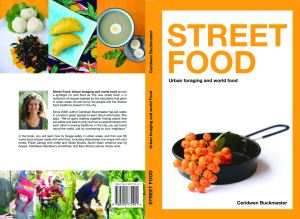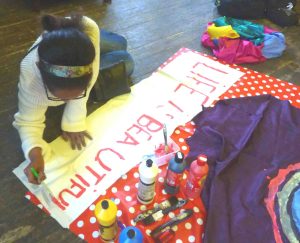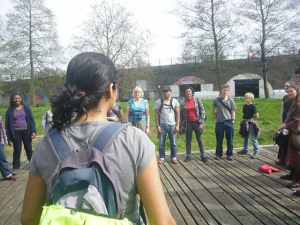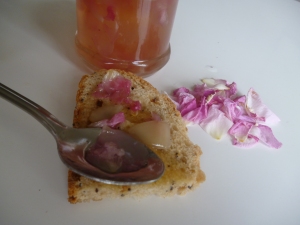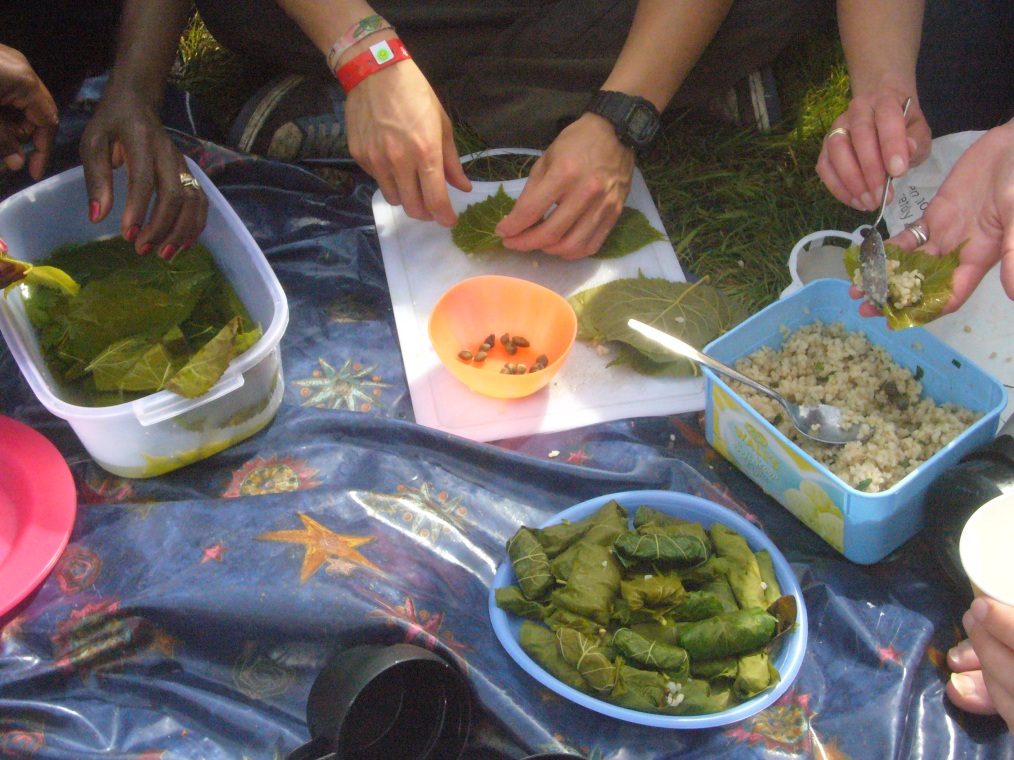Street Food
World food with wild food
Street Food is a series of recipes inspired by the wild plants that grow abundantly in London as well as by the people who live here, and the culinary traditions they have brought with them from all over the planet.
Street Food is wild food, found literally on the urban streets, although always collected in safe spaces – parks, commons, away from roads, away from dog walked areas, not on old industrial sites – and Street Food also refers to the urban culture of eating food on the go, on the streets, without cutlery, with your hands, surrounded by passersby, prepared by people from around the world who are cooking to make a living. Street Food fills you up and nourishes you on a busy day. The culture of Street Food contributes to the atmosphere, safety and conviviality of the urban centres. In this book, the vision of the urban includes the green spaces. We’ve moved from the tarmac streets into the parks and recreation grounds, into places where we can actually pick some wild food and cook it up, there and then, in the open air. With large groups of people we’ve experimented with each other’s cooking traditions and with the new-old ingredients of nettle, chickweed, plantain, dandelion, shepherd’s purse, thistle, elder, blackberry, dock, bittercress, rose petal, hawthorn, goosegrass, hogweed, fennel.
Street Food is a project developed by the organisation Invisible Food. For us, Invisible Food refers to everything that sustains us that isn’t ordinarily visible or easy to define. The ‘food’ has a literal and practical interpretation; the ‘food’ is the wild foods such as nettle, or elderflower that we can harvest and learn how to use. There is also a deeper, more soulful interpretation of Invisible ‘food’ as that which sustains us emotionally and spiritually, that which creates a strong community, friendship and support, a connection with the earth, and a commitment to social justice. The project of monthly gathering plants and preparing a feast has become an accessible ritual, enticing to all regardless of cultural and religious background.
Throughout the project we have cooked dumplings, stews, pickles, fermented vegetables, and breads, dishes which are common around the world, each with a slightly different seasoning and spice mix. Many dishes have been adapted and taken root in cultures far away from where they originated, as people have moved and been moved around the globe. We explore the Vietnamese Bánh Mì, which is a product of the French introducing bread and paté to Vietnam in the colonial period. There are also wild food versions of dishes which are a symbol of diversity themselves, for example the Venezuelan Christmas dish, Hallaca, is a coming together of European, Indigenous and African traditions. There are many ingredients in the recipes that follow that aren’t wild, they may need to be bought in a shop. There are many spices I’ve included that aren’t grown in this country. This isn’t a venture in trying to sustain only with wild food. The other ingredients are included, as while the main premise is how to cook wild plants in exciting ways, it’s also about how to prepare food that connects you, to a wise community of people with diverse backgrounds who happen to be living in the same place, at the same time, breathing with the same plants, sharing the same resources.
What we eat is one way to directly connect to the life forces of the planet. The more we engage with the processes of food harvesting and preparation, the more power we add to the energy we put into our mouths to nourish us. We can take in various ways from nature. We can collect seeds, leaves, berries. We can dig up roots. It can be helpful to adopt an intention for the wild food we gather. For example, “This is the seed (or leaf, flower, root) that I have gathered with my own hands, and with it I prepare a dish that connects me to the abundance that this earth provides me with so effortlessly, so I may live and thrive.” This intention is a very powerful thing as there is something in having an intention which acts as a safeguard against overtaking. While there are some glorious built-in safeguards in nature to ensure equal distribution, for example holly berries are toxic to humans but not to birds, we humans have to learn how take consciously, to take only what we need, to learn how much is enough, to leave what other creatures need more than us. This connection with knowing our true needs counters the tendency to being mechanical in our interactions with nature. And this is not just relevant at the harvesting stage. I try to look after seeds once I’ve collected them, to put them in a suitable bag in a suitable container, to shake them regularly, to check on them and look out for signs that they might need some other form of care. This intention that we nurture our actions with comes from the knowledge that once taking becomes mechanical, abuse and exploitation can easily occur, mining great big gash holes in the earth’s surface, cutting down the rainforest, cutting out our own lung.
There is a popular expression of large cities being inspiring places where people from many cultures live. London is a great example of this. Most Londoners enjoy being part of the diversity of this city, sometimes even those who have experienced racism along with it. What every Londoner will also experience in some form, are the shockwaves sent through society as a whole from the unseen dimensions of social systems that generate conflict, anger, bitterness, self-hate, destruction of the environment, physical abuse and violent communication. It seems a relevant issue to tackle for a project like Invisible Food – it’s the other side of that which feeds us – which we tackle by bringing people together and creating a space to experience feelings of belonging and connection that transcends nation, race and class. These feelings of belonging will build stronger community networks in London and other cities. I hope this book will be part of a process that strengthens and connects.
